They say it’s a dud but GARY STEEL reckons Tim Buckley’s Sefronia album is a jewel that deserves another spin.
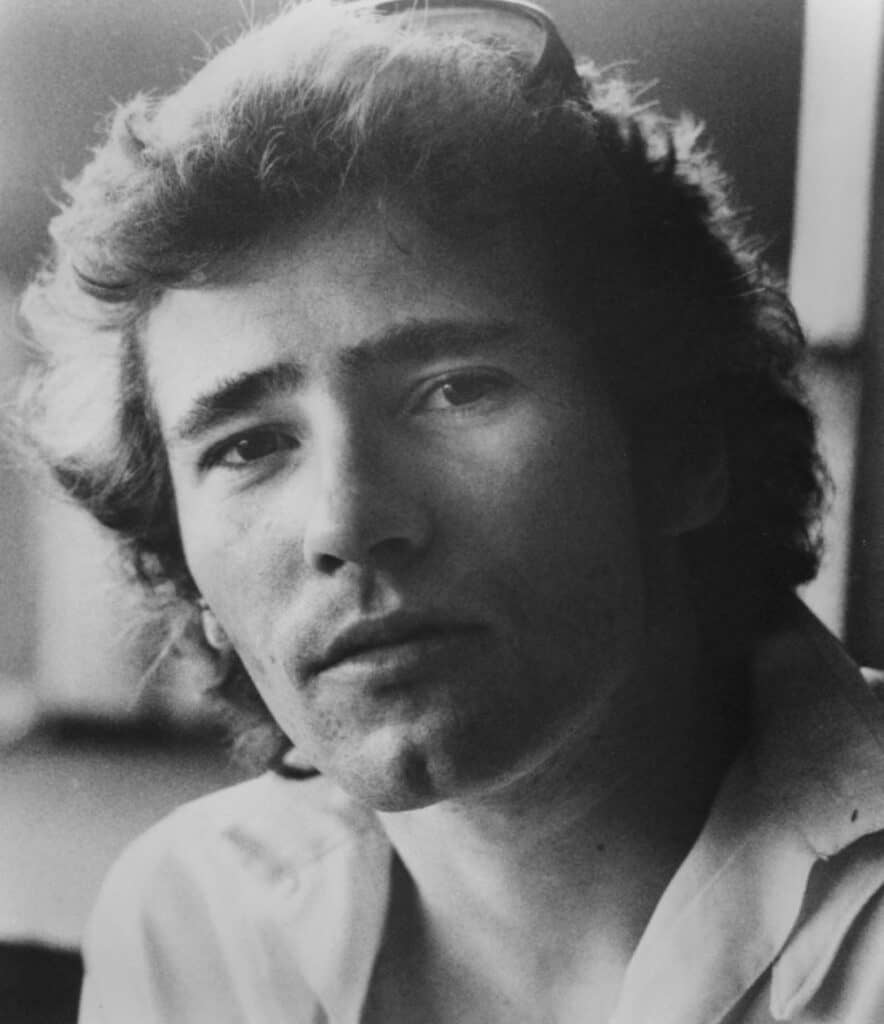 Have you ever watched a great film and then made the mistake of checking its audience or critics rating on an aggregator site like Rotten Tomatoes, only to find that everybody thinks it sucks? Not likely, is it? And yet Tim Buckley’s 1973 album Sefronia – which I consider to be the bees knees – is universally derided. Is it a case of comprehensive misunderstanding amongst reviewers, or am I just dead wrong?
Have you ever watched a great film and then made the mistake of checking its audience or critics rating on an aggregator site like Rotten Tomatoes, only to find that everybody thinks it sucks? Not likely, is it? And yet Tim Buckley’s 1973 album Sefronia – which I consider to be the bees knees – is universally derided. Is it a case of comprehensive misunderstanding amongst reviewers, or am I just dead wrong?
The Rolling Stone Album Guide apparently gave it only one star out of five, while AllMusic (whatever that is) considers it a two-star record and opines that Buckley’s singing is less good than on his other albums, and the material “forced and pedestrian.” NME, meanwhile, wrote that Sefronia is “widely agreed to be Buckley’s most over-produced and underwhelming effort.”
Support Witchdoctor’s ongoing mission to bring a wealth of new and historic music interviews, features and reviews to you this month (and all year round) as well as coverage of quality brand new, contemporary NZ and international music. Witchdoctor, entertainment for grownups. Your one-off (or monthly) $5 or $10 donation will support Witchdoctor.co.nz. and help us keep producing quality content. It’s really easy to donate, just click the ‘Become a supporter’ button below.
I listened to the recently remastered CD yesterday and I’m resoundingly of the opinion that Sefronia deserves a fresh appraisal. Its biggest crime is the variety of styles it offers, which seems to have offended the sensibilities of the few that clung to the idea that Buckley should have stayed true to the vision that led to brave but commercially foolhardy projects like Starsailor… projects that saw his fanbase melt away and his career in the dumpster. For Buckley, it must have seemed like a lose-lose situation, and at times, you can feel his road fatigue, and his sense of disappointment at being marginalised.
 Tim Buckley’s career in music and the nine albums he made in his lifetime represent a remarkable and unprecedented voyage into the unknown. Rock music wasn’t the corporate beast it is now, and true artists like Buckley weren’t stage-managed by their record companies and other vested interests. It was a brief time when artists could dictate their own terms and make albums that represented their true calling, but unlike today, there simply wasn’t an audience for music as ground-breaking and left-field as Buckley’s became.
Tim Buckley’s career in music and the nine albums he made in his lifetime represent a remarkable and unprecedented voyage into the unknown. Rock music wasn’t the corporate beast it is now, and true artists like Buckley weren’t stage-managed by their record companies and other vested interests. It was a brief time when artists could dictate their own terms and make albums that represented their true calling, but unlike today, there simply wasn’t an audience for music as ground-breaking and left-field as Buckley’s became.
Between the pleasant folk-rock of the self-titled Tim Buckley (1966) and his final album, the spooked grooves of Look At The Fool (1974), Buckley’s musical style never settled into just one thing, but represented his own interest in fusing the sounds that interested him, a genuine reflection of his adventuring in music. What Buckley did with music was unprecedented then, and now. From the folk-rock psychedelia of Goodbye And Hello (1967) through the sublime, mellow folk-jazz of Happy Sad (1969), the melodic introspection of Blue Afternoon (1969), the voodoo intimacy of Lorca (1970), the astonishing free caterwauling of his masterpiece Starsailor (1970) to his commercial reinvention on the sex-funk of Greetings From LA (1972), Buckley never made a predictable move, never faltered in his quest to find the next thing.
It was an astonishing creative run that asked a lot of his listeners. Those transfixed by the beauty and startling turn of Buckley’s voice on those easier early releases were faced with increasingly challenging musical vistas over just a few years in the late ‘60s. And then, the reinvention marked by the super-horny Greetings From LA. Despite wide praise of that album for its impressive blue-eyed funk and its sex-charged riffs, its commercial performance failed to lift him out of limbo. With corporate interest all but extinguished, his Warner contract ended and the last two albums would come out through Herb Cohen’s independent DiscReet label, which must have been something of a comedown.
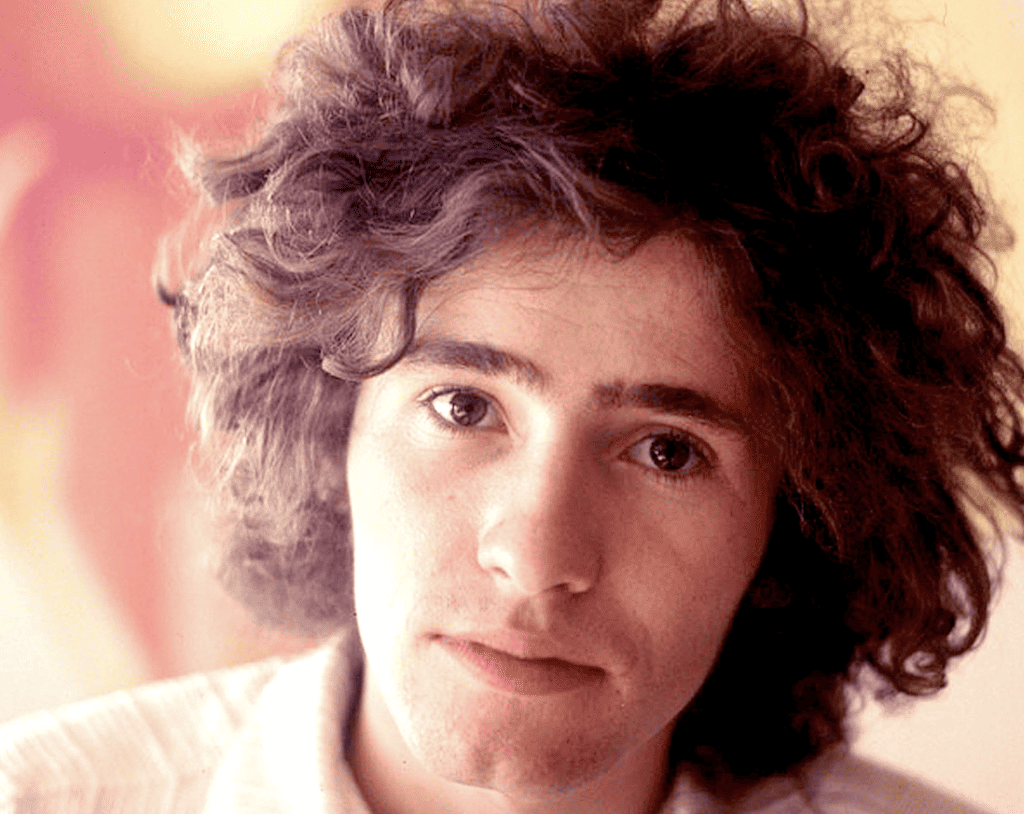 On Sefronia, there’s none of the laser focus of his previous albums, but that’s no bad thing. If it had come out in the late ‘70s or during the 1980s, and it had received the kind of marketing it deserved, the album just may have opened doors for Buckley. Importantly, Sefronia shows just how versatile he was as a vocalist. Had he survived, there may have been albums of jazz or Great American Songbook interpretations in the future. With that voice, anything was possible.
On Sefronia, there’s none of the laser focus of his previous albums, but that’s no bad thing. If it had come out in the late ‘70s or during the 1980s, and it had received the kind of marketing it deserved, the album just may have opened doors for Buckley. Importantly, Sefronia shows just how versatile he was as a vocalist. Had he survived, there may have been albums of jazz or Great American Songbook interpretations in the future. With that voice, anything was possible.
Perhaps the problem with Sefronia in the eyes of its critics is that the material is so variable, and a couple of times, it does go quickly from sublime to the faintly ridiculous. Of the five cover versions (that’s half the album if you sandwich the two sections of the title track together) the MOR ballad ‘I Know I’d Recognise Your Face’ is especially mawkish. But by casting Buckley in a duet with Marcia Waldorf on a piece written by the album’s producer Denny Rendell, once again we’re given insight into Buckley’s superb vocals and his ability to completely own a song. He sounds utterly authoritative acting the part of a man looking back with regret at a lost love. What a pity though, that Tim didn’t get to work his falsetto on one of Rendell’s better songs, like ‘Let’s Hang On’, or ‘Working My Way Back To You’ (originally hits for the Four Seasons).
The other track that gets its fair share of opprobrium is ‘Peanut Man’, a novelty song with occasional interjections from a very deep-voiced but uncredited male who just may be percussionist King Errison, and nonsense lyrics. Here’s a brief sample for your edification: “Rum and Coca Cola/Add some sweet potato to it/You know everybody wants to do/The peanut butter hop.” Ah, yeah… but actually, while it’s a mere trifle, ‘Peanut Man’ is fun and doesn’t outstay its welcome.
Once the above two songs are excluded, however, the album starts looking and sounding much, much better. Easily the best cover version on the album is the opening track, Fred Neil’s epochal ‘Dolphins’. Buckley had been a huge fan of Neil and his folk/jazz/blues crossover and although Neil boasted an extraordinary baritone vocal apparatus Tim’s reading of the song is definitive, in the same way that Jeff Buckley’s version of Leonard Cohen’s ‘Hallelujah’ became the touchstone for that song decades later. It’s a deeply humanistic song dreaming of what it might be like being free of the ties that bind, a song of yearning for the impossible flight, or escape, from human bondage. Although I think it was guitarist Lee Underwood that mentioned Tim had a cold/blocked nose when during this session, to me it’s a superb performance. His voice had grown in authority over the previous few years and he really soars towards the end as the song builds to its climax.
 ‘Martha’ is another song of love regret and this time penned by a then almost unknown Tom Waits. While its nostalgic tones are miles stylistically from the type of material Buckley usually sings, he handles this excellent, memorable tune with ease. Take a listen to the Waits version which, by contrast, has a certain raggedy charm but doesn’t get close to Tim’s version.
‘Martha’ is another song of love regret and this time penned by a then almost unknown Tom Waits. While its nostalgic tones are miles stylistically from the type of material Buckley usually sings, he handles this excellent, memorable tune with ease. Take a listen to the Waits version which, by contrast, has a certain raggedy charm but doesn’t get close to Tim’s version.
The last cover version is the final track on the album (for some reason credited to Tim on the album cover) and an odd way to sign off after the wondrous title track, but it’s a very good interpretation of ‘Sally Go Round The Roses’, which had been a hit for girl group The Jaynetts back in 1963. While their version is cute, Tim’s version turns into a tomcat howling after a girlfriend who has rejected him for another woman, no less.
And now, to the even better stuff. As Lee Underwood once remarked in an interview, despite the seeming eclecticism of Buckley, there are thematic links between Starsailor, Greetings From LA, Sefronia and Look At The Fool, and accordingly, some great songs on all of them. On Sefronia, ‘Honey Man’, ‘Quicksand’ and ‘Stone In Love’ each has the horny vibe of Greetings… and given slightly different arrangements could have easily fit on that album. It’s true that the arrangements on Sefronia are at times overcooked and brash and largely the work of LA sessionmen rather than those, like Underwood, who had a real stake in the music. But for all that, there’s something appealing about that brashness. The thumping groove of drummer Buddy Helm and bassist Bernie Mysior give these three songs some real heft and place them somewhere between white-boy funk and the sleazy rock of mid-‘70s Rolling Stones. Aside from their relative merits as songs, there’s something about the lyrics and the vocal performance on these three songs that hint at the exhaustion apparent on Look At The Fool a year later. It’s a midpoint between the ribald exaltation of Starsailor and parts of Greetings… and the last album’s seeming descent into a fog of drunken lust dreams and giving up the ghost. These are songs of lust and getting in too deep but around the edges there’s a disaffection, a weariness.
Okay, so I left the best two songs until last. ‘Because Of You’ should be awful, with its cod-disco drums and creamy strings. It sounds like he’s been listening to the deep soul of Al Green and a fair part of the song utilizes Tim’s remarkable falsetto. But it’s not awful. Or maybe it is, and I just love it anyway. I think it’s one of the most felt performances Buckley ever committed to plastic, and lyrically, like so many of his songs, it riffs in an almost devotional way on love-making: “Somehow, when I’m in your arms/Deep in the blindness of love/You become all the women… searching your skin.” Tim is incredible on this heartbreaking song, a song that wants to break on through to the other side, derive something almost spiritual out of the ecstasy of sexual love. When he exhorts: “I hope you understand/What makes this man/Want to love you right” he goes from that tender falsetto to a very masculine man bellowing his emotions.
And so we come to the title track, ‘Sefronia’, split into two tracks, ‘After Asklepiades, After Kafka’ and ‘The King’s Chain’. Utterly unique in Tim’s catalogue, this epic track, both musically and lyrically, traverses material that sounds almost like an excerpt from a contemporary opera or stage show, and I’m picking that it’s a small part from a work in progress that never quite got finished. Like ‘Honeyman’, it’s co-written with his former lyricist Larry Beckett and it’s seemingly set in colonial-era America, Buckley singing purposefully about a female slave with whom he falls in love when she shakes her “black cat’s bone” at him. A sensitive 21st century audience will probably find reason to take offense at this beautiful and transcendent song, which includes the ‘N’ word and a reference to the slave’s dark nipples. But it’s so much more than just a slave-driver’s lust for a dark-skinned beauty. Shimmering with marimba and strings, Buckley’s voice is given room to soar, and it’s fantastic to hear him really let rip like this: not yelping and yodelling and screaming but like a pure Irish tenor. It’s a song that I’ve played a hundred times or more, and it never fails to give me shivers down the spine.
 Is Sefronia a good point of entry for those interested in hearing Tim Buckley for the first time? Not really. For that, I’d recommend Happy/Sad, Blue Afternoon, Starsailor and Greetings From LA, with a smattering of songs from his other albums, including a small selection from posthumously released live albums like the incredible 1990 double album Dream Letter Live In London 1968. But for confirmed Tim Buckley fans, Sefronia is essential. Not only is it half a great album, it also features the best-recorded vocals of his later career. Sadly, his vocals on Greetings From LA are too far down in the mix, which makes them sound small in the overall sound picture, while they really fucked them up on Look At The Fool, with loads of sibilance and a thin sound that scrapes your ear wax off if you dare to turn up the volume. The recording of Tim’s vocals on Sefronia are rich, vibrant and textured, and despite the brashness of the musical arrangements on some songs, they come through loud and clear. The album is worth the price of admission for that alone. He really is the most extraordinary vocalist of his generation.
Is Sefronia a good point of entry for those interested in hearing Tim Buckley for the first time? Not really. For that, I’d recommend Happy/Sad, Blue Afternoon, Starsailor and Greetings From LA, with a smattering of songs from his other albums, including a small selection from posthumously released live albums like the incredible 1990 double album Dream Letter Live In London 1968. But for confirmed Tim Buckley fans, Sefronia is essential. Not only is it half a great album, it also features the best-recorded vocals of his later career. Sadly, his vocals on Greetings From LA are too far down in the mix, which makes them sound small in the overall sound picture, while they really fucked them up on Look At The Fool, with loads of sibilance and a thin sound that scrapes your ear wax off if you dare to turn up the volume. The recording of Tim’s vocals on Sefronia are rich, vibrant and textured, and despite the brashness of the musical arrangements on some songs, they come through loud and clear. The album is worth the price of admission for that alone. He really is the most extraordinary vocalist of his generation.
Released in September 1973 with minimal promotion, Sefronia really didn’t stand a chance. The cover portrait didn’t help. A doleful Buckley peers at us from within a rather average portrait. He was a good-looking bloke who looked stunning in many of the photographs taken of him, so why this poor artwork on a crucial album?
Within a year, he would release the no-prospect Look At The Fool, be dumped by manager Herb Cohen, and on June 28, 1975, he would die of a heroin overdose, a has-been at the age of 28. It’s a tragedy that still cuts me up, because he still had songs to sing, tours to perform and albums to make. Unlike Jim Morrison and Jimi Hendrix, who had both come to something of a dead end by the time they died, Buckley had a vocal and songwriting talent that could – with another shake of the dice – have turned into a victory lap.
+ I planned to refer to Lee Underwood’s beautiful Blue Melody: Tim Buckley remembered in this piece but when I scoured my bookshelves I discovered that it was no longer there. I hope whoever nicked it got as much out of it as I did.





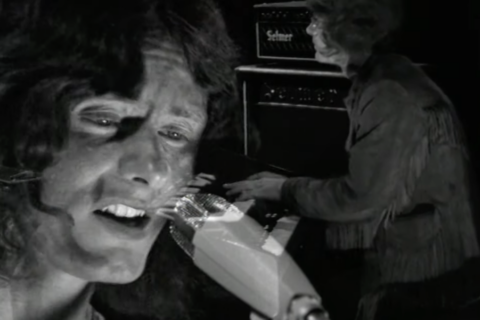


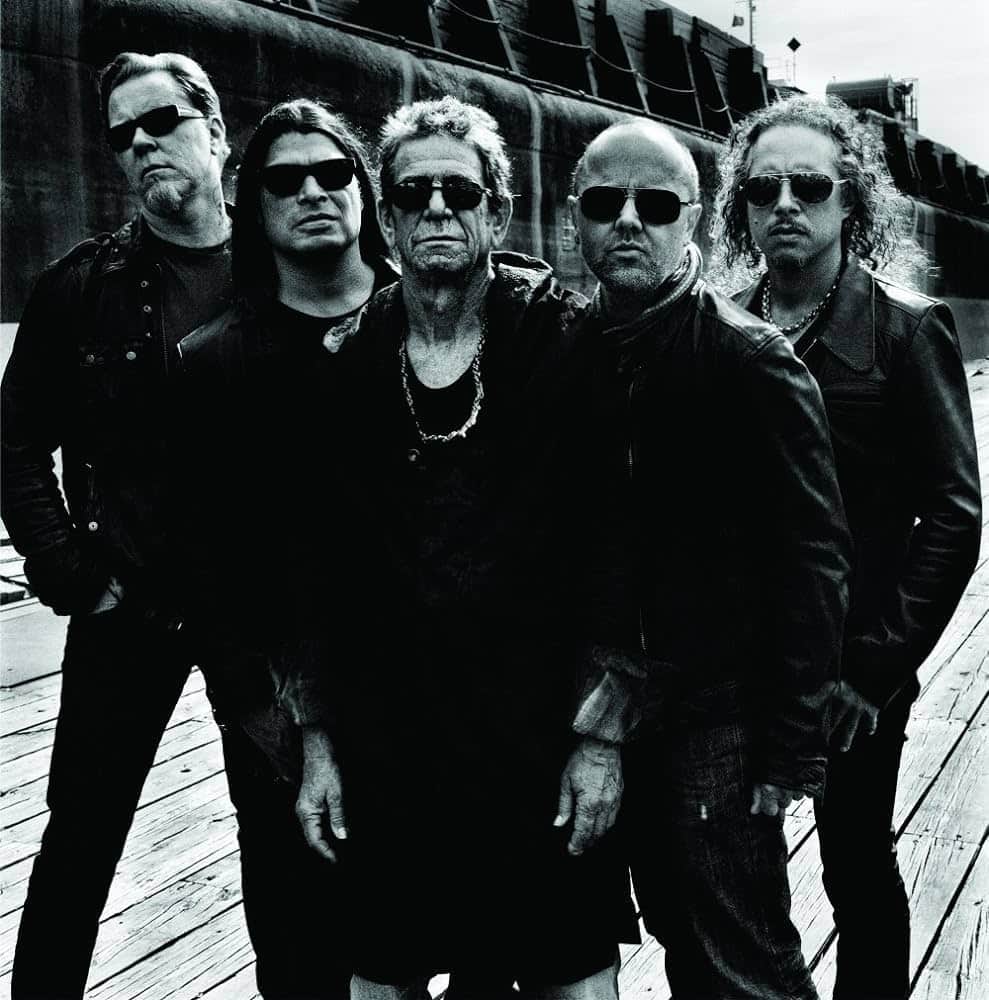
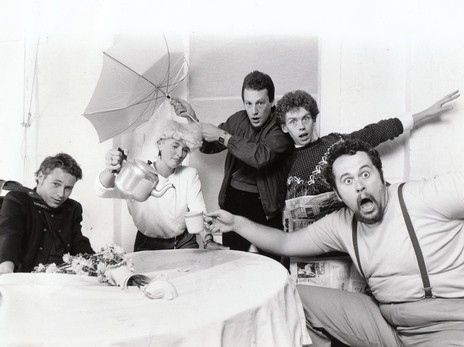

Hi Gary,
The title track ‘Sefronia’ was, when released on the US LP version, complete, unlike on the UK LP where it was chopped in half. Something to do with typically petty UK music licensing rules.
Buckley had a cold during the recording sessions for the LP, and not during ‘The Old Grey Whistle Test’ BBC TV sessions. And do check out the dynamite ‘Honey Man’ recording on those sessions. Along with the incendiary 1970 Starsailor Band gigs and of course don’t forget the spectacular live 1975 ‘Starwood’ concerts. All easy to find onlne.
The multi tracked vocals on ‘Peanut Man’ are all Buckley, apart from the female backing vocals by Myrna Matthews and Sharon Beard. And nice tenor saxophone in there courtesy of Tom Scott.
As for the artists’ recording freedom in those far off days, don’t get too carried away. Stephanie and I attended the record launch for ‘Sefronia’ and we chatted to Buckley for an hour or so, asking him all kinds of questions. Questions such as when was he going to make more albums like ‘Starsailor’. “They won’t let me.” was his reply, whilst glancing pointedly at his ‘management’ team. Hmm…. Also don’t forget that Buckley’s original title choice for ‘Look At The Fool’ was ‘Tijuana Moon’. Just look at the cover. You can even see the original track listing running order on the rear sleeve and believe me, it sounds much better than the one the record company came up with. Try it! And avoid the UK pressings of ‘Sefronia’. I really thought ‘they’ would have sorted that particular goof out by now.
Still, it’s heartening to see appreciation for real genius finally oozing out at last.
Thank you, Gary